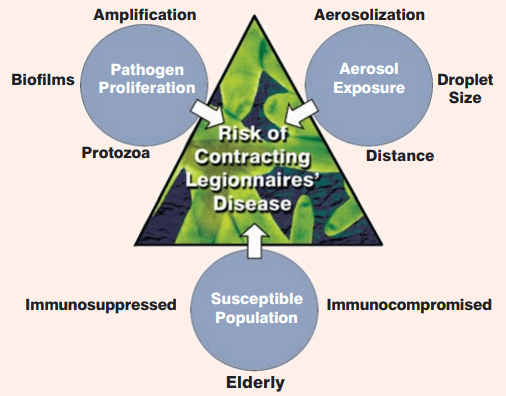Technical Challenge
There are heaps of myths regarding bacteria, however it ought to be noted that the microorganism is virtually widespread in most natural water sources like lakes and rivers. However, there are bound contingency within which artificial water systems will give the best piece of land for the microorganism. A risk assessment is just the method of ascertaining if these circumstances are gift, leading to health and safety risks for workers, residents and site guests.
What is Legionella?
Legionnaires’ disease may be a doubtless fatal variety of respiratory disorder caused by the inhalation of tiny droplets of contaminated water containing bacteria. All artificial hot associate degreed cold water systems are possible to produce an surroundings wherever bacteria will grow. wherever conditions area unit favourable (ie appropriate growth temperature range; water droplets (aerosols) made and dispersed; water keep and recirculated; some ‘food’ for the organism to grow like rust, sludge, scale, biofilm etc) then the microorganism could multiply so increasing the chance of exposure. It’s a straightforward proven fact that the organism can colonise each giant and tiny systems therefore each need risks to be managed effectively.



How do you get Legionnaires’ disease?
Legionnaires’ disease is contracted by eupneic tiny water droplets which may be suspended within the air referred to as aerosols. Aerosols containing the microorganism can cause a risk to prone people Infection but, is clearly connected to condition. Extremely prone people could get infected even at comparatively low doses.
What are the symptoms?
Symptoms of Legionnaires’ malady, Shawnee fever and loichgoilhead fever are all like the symptoms of terribly severe grippe. Different Symptoms may be felt as: heat, fever and chills, Cough, Muscle pains, Headache, Pneumonia, Diarrhoea, Signs of confusedness.
iFluids Engineering uses our experience knowhow, expertise and supports every consumer by formulating and implementing water sampling ways specific to every individual consumer and budget.
Risk Assessment Report Content
Legionella risk assessment ought to embrace the following:
- A documented system summary, together with wind schematics and photographic proof
- Testing of hot and cold water throughout the building at key points
- Water tank surveys
- Flow and stagnation tests
- Inspection for aerosol formation hazards
- Supply of digital thermometers, records and basic training to workers
Legionella Sampling Techniques
It is necessary to focus on that there’s no statutory demand to hold out routine bacteria sampling to domestic water systems. But wherever water temperatures can’t be controlled among the required vary, routine bacteria sampling may be a valuable tool in managing the chance of bacteria.
Standard Applied
Legionellosis: Risk management for building water systems. ANSI/ASHRAE standard 188–2015

